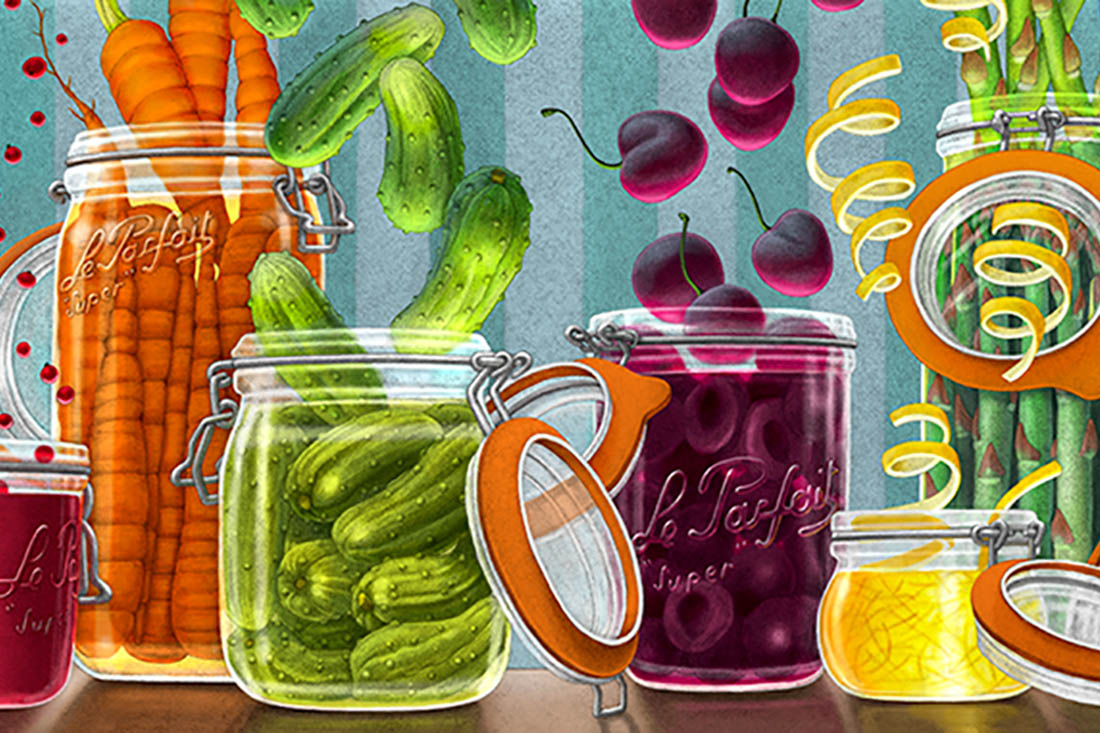Benefits of Le Parfait Canning Jars
• Made in France
• Heavy glass for durability
• Embossed with Le Parfait signature
• BPA-Free reusable rubber gaskets
Benefits of Le Parfait Canning Jars
• Made in France
• Heavy glass for durability
• Embossed with Le Parfait signature
• BPA-Free reusable rubber gaskets

Step 1:
Prepare your Le Parfait Jars or Terrines
Make sure the glass surfaces are not chipped and there are no signs of abrasion. Clean the jars, terrines, and lids thoroughly with hot soapy water, or add a tablespoon of bleach per liter of water. Rinse thoroughly with warm water and let air dry. Do not wipe the inside.
Step 2:
Prepare the food
The food your preserve should be fresh and healthy. Never use frozen or defrosted products or ingredients.
Step 3:
Cook the food
Follow the instructions for your recipe.
Step 4:
Fill the Le Parfait Jars or Terrines
The filling for your Le Parfait Jars and Terrines should be as hot as possible- even boiling. Fill up to the engraved mark limit, or 2 cm from the brim.
Step 5:
Seal the Le Parfait Jars or Terrines
Use a New Le Parfait Super universal rubber seal specially designed for the shape of your jar or terrine. Boil the rubber seals before fitting them onto the lids. Make sure the brim of your jar or terrine is perfectly clean before closing. Finally, tightly clam the closing system shut, and immediately move on to heat treatment, if your recipe calls for it.
Step 6:
Heat Treatment
Place a clean cloth at the bottom of your pressure cooker. Fill it with hot water and completely immerse your jars or terrines upright with the lids at the top. Seal the pressure cooker tightly. Once the valve starts steaming, begin timing according to your recipe. When the time has elapsed, let it cool down naturally, with the lid closed. You can use a pot instead of a pressure cooker, but keep a careful eye on the water temperature which must reach 100˚ C, and cook 30% longer.
Step 7:
Check and store the jars
Once the jars or terrines have cooled down completely, check that there is a vacuum inside by unfastening the clamp. The lid should stay sealed to the jar and resist pressure. If this is not the case, it may be due to:
• Incorrect filling: too little or too much volume.
• Inadequate heat treatment: not enough time, or the temperature was not hot enough.